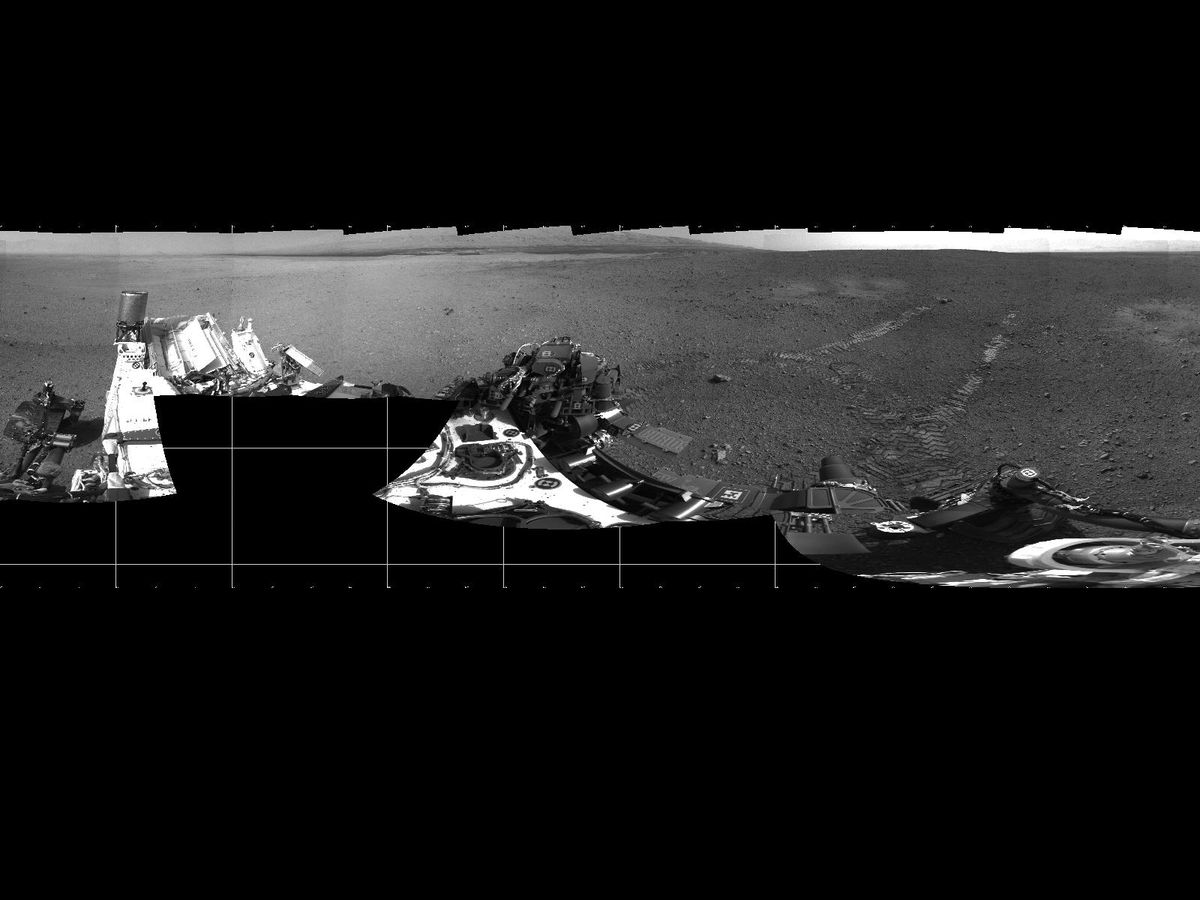Mars Rover Tracks Akin to Neil Armstrong's Moon Bootprints, Scientist Says

NASA's newest Mars rover Curiosity is making tracks on the Red Planet that call to mind the groundbreaking footprints left on the moon by Neil Armstrong more than 40 years ago, a rover scientist said today (Aug. 27).
Neil Armstong, who became the first person to walk on the lunar surface on July 20, 1969, died Saturday (Aug. 25) at the age of 82. He and his Apollo 11 crewmate, Buzz Aldrin, left the first human imprints on the moon in the form of bootprints indented into the lunar dust everywhere they walked (or hopped, since the moon has one-sixth Earth's gravity).
Now, one of NASA's latest endeavors, the Mars Science Laboratory rover Curiosity, is making a similar impression on another planetary body. The rover landed on Mars Aug. 5 (PDT) and made its first test drive on Aug. 22.
"An iconic image of the mission" shows "four scour marks with wheel tracks," Curiosity chief scientist John Grotzinger of NASA's Jet Propulsion Laboratory in Pasadena, Calif., said today during a news briefing. He compared that photo to images of the footprints left by Armstrong on the moon. "I think instead of a human, it's a robot pretty much doing the same thing."
Grotzinger was asked by a journalist whether the Curiosity mission bore any resemblance to the Apollo 11 journey taken by Armstrong, along with Aldrin and the mission's Command Module pilot Michael Collins.
"The analogy is a terrific one," Grotzinger replied.
Curiosity, a car-size rover that cost $2.5 billion to build and operate, is beginning a two-year mission to explore Mars' Gale Crater for hints that the Red Planet may have ever been habitable to microbial life. The project is NASA's most audacious robotic mission to another world — just as ambitious, in some ways — as the Apollo flight that put Armstrong on the moon.
Sign up for the Live Science daily newsletter now
Get the world’s most fascinating discoveries delivered straight to your inbox.
This story was provided by SPACE.com, a sister site to LiveScience. Follow Clara Moskowitz on Twitter @ClaraMoskowitz or SPACE.com @Spacedotcom. We're also on Facebook & Google+.













